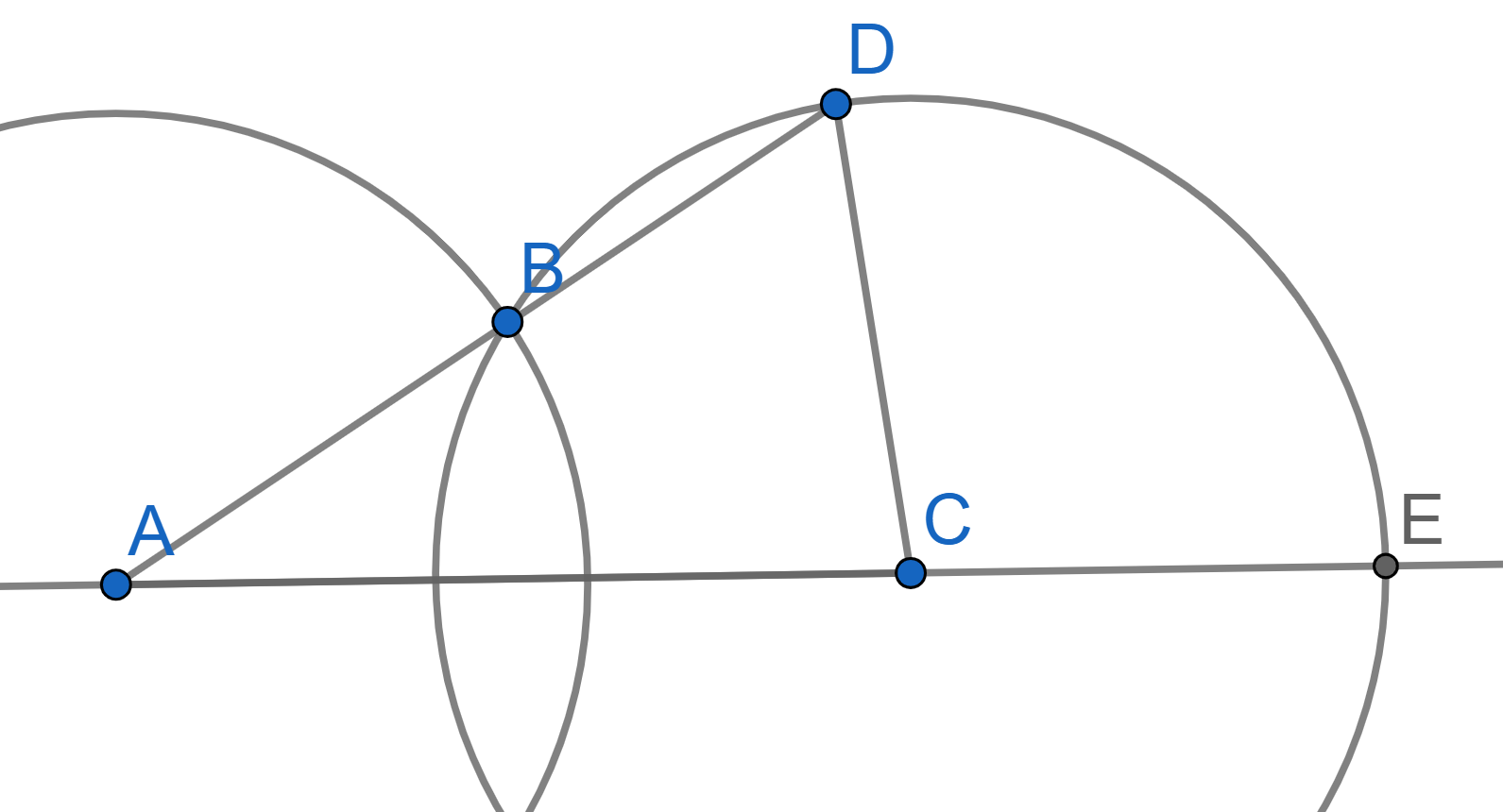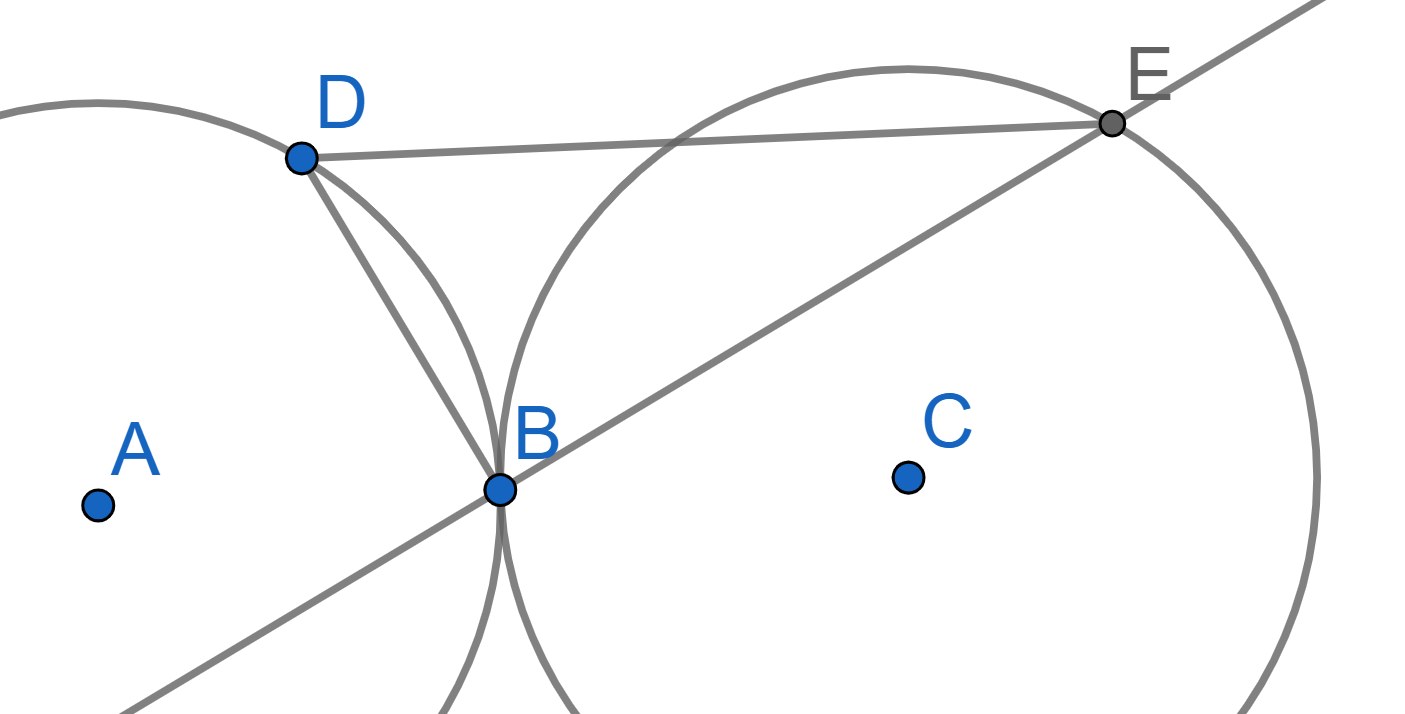Problems
Prove that the area \(S_{ABC}\) of a triangle is equal to \(abc/4R\).
The point \(D\) lies on the base \(AC\) of the isosceles triangle \(ABC\). Prove that the radii of the circumscribed circles of the triangles \(ABD\) and \(CBD\) are equal.
Express the area of the triangle \(ABC\) through the length of the side \(BC\) and the angles \(B\) and \(C\).
Two intersecting circles of radius \(R\) are given, and the distance between their centers is greater than \(R\). Prove that \(\angle ECD = 3\angle CAD\).

Find all triangles in which the angles form an arithmetic progression, and the sides form: a) an arithmetic progression; b) a geometric progression.
Prove that the point \(X\) lies on the line \(AB\) if and only if \(\overrightarrow{OX} = t \overrightarrow{OA} + (1 - t) \overrightarrow{OB}\) for some \(t\) and any point \(O\).
Several points are given and for some pairs \((A, B)\) of these points the vectors \(\overrightarrow{AB}\) are taken, and at each point the same number of vectors begin and end. Prove that the sum of all the chosen vectors is \(\vec{0}\).
Prove that the medians of the triangle \(ABC\) intersect at one point and that point divides the medians in a ratio of \(2: 1\), counting from the vertex.
Prove that, when a circle is translated it becomes a circle.
Two circles of radius \(R\) touch at point \(B\). On one of them, point \(D\) is chosen and on the other point \(E\) is chosen. These points have a property of \(\angle DBE = 90^{\circ}\). Prove that \(DE = 2R\).
